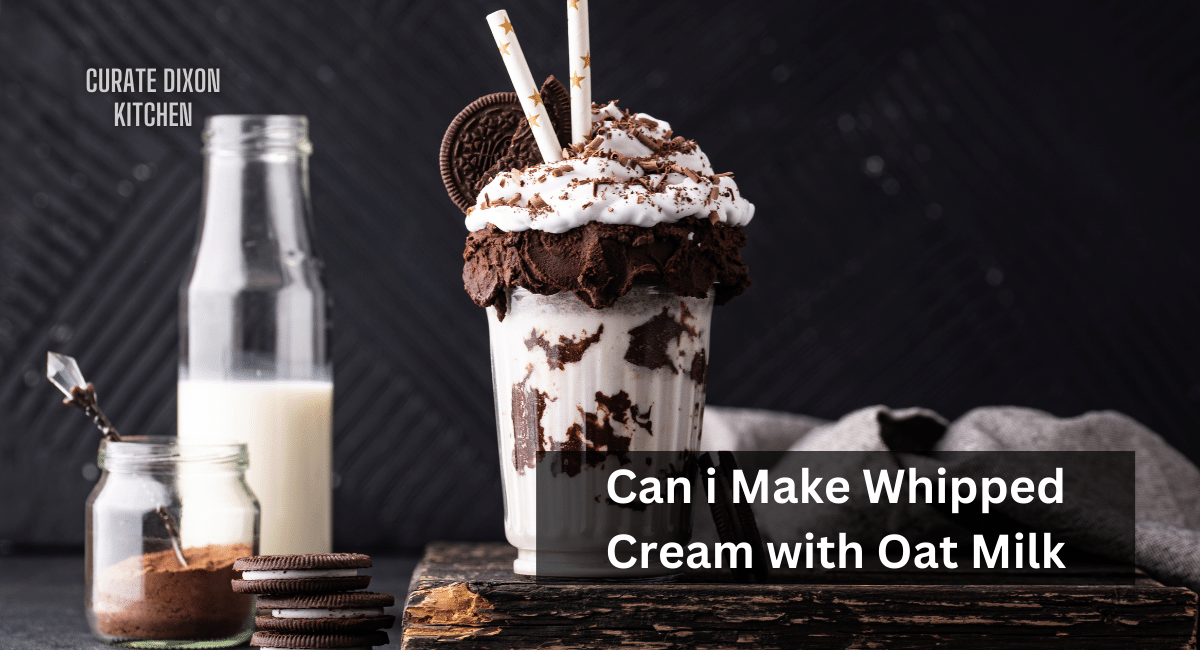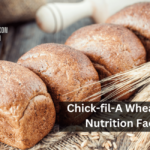Whipped cream is a versatile and delightful topping used in various desserts, beverages, and dishes. It adds a creamy, airy, and slightly sweet texture that enhances various culinary creations’ overall flavor and presentation. However, people who are lactose intolerant, allergic to dairy, or who follow a vegan diet may find it challenging to consume classic whipped cream because it contains dairy.
Oat milk, a plant-based milk alternative made from oats, has gained popularity as a versatile ingredient. It offers a creamy texture and a naturally sweet flavor, making it a suitable candidate for creating a dairy-free whipped cream alternative. In this article, we’ll go through exactly how to produce whipped cream with oat milk.
Understanding the Science Behind Whipped Cream
Before diving into the detailed process of making whipped cream with oat milk, it’s essential to understand the science behind whipped cream and how oat milk can be used as a suitable substitute.
Heavy cream is whipped to create traditional whipped cream. The cream is whipped to incorporate air, which results in the formation of a foam-like structure. This foam’s stability is aided by the cream’s fat level, which produces a light and airy feel.
Oat milk, although lower in fat compared to heavy cream, contains soluble fiber and proteins that can mimic some of the characteristics of dairy cream when whipped. However, achieving the desired texture with oat milk may require some adjustments and additional steps.
Ingredients and Equipment
To make oat milk whipped cream, you will need the following ingredients and equipment:
Ingredients:
1. Unsweetened Oat Milk:
Opt for unsweetened, plain oat milk without added flavorings or sweeteners. You’ll need approximately 1 cup.
2. Chilled Mixing Bowl:
Use a metal or glass mixing bowl and place it in the freezer for about 15-20 minutes before starting. The cold bowl helps maintain a lower temperature during whipping, which is crucial for achieving the desired texture.
3. Chilled Whisk or Electric Mixer:
A hand whisk. You can use a hand mixer, a stand mixer with a whisk attachment, or both. Check to see if your whisk or other mixer attachments are as cold as your mixing bowl. It is advised to put them and the bowl in the freezer to chill.
4. Sweetener:
A liquid sweetener like maple syrup, agave nectar, or powdered sugar can be used. If you want more sweetness, add more or less after starting with 2-3 teaspoons.
5. Vanilla Extract:
For flavor, add 1 teaspoon of vanilla extract.
6. Optional Stabilizer:
If you want your whipped cream to maintain its shape for longer, consider adding a stabilizer like cornstarch or tapioca starch. You can use 1-2 teaspoons.
Equipment:
- Measuring Cups and Spoons: For accurate measurements.
- Freezer: To chill the mixing bowl, whisk, or mixer attachments.
Spatula: To achieve even whipping, scrape the mixer bowl’s sides.
Now that we have all the necessary ingredients and equipment let’s proceed with the step-by-step instructions for making oat milk whipped cream.
Step-by-Step Instructions
Follow these detailed steps to create a delicious and dairy-free whipped cream using oat milk:
1: Chill the Mixing Bowl and Whisk
- Before you begin, ensure that your mixing bowl and whisk or mixer attachments are thoroughly chilled. Place them in the freezer for about 15-20 minutes. This step is critical because the cold temperature helps the oat milk froth up and stabilize into a creamy texture.
2: Pour the Oat Milk
- Once your mixing bowl is appropriately chilled, please remove it from the freezer and pour in approximately 1 cup of unsweetened oat milk.
3: Start Whipping
- Beginning quickly, mix the oat milk. A hand mixer, a stand mixer with a whisk attachment, or a stand mixer are all options. The chilly temperature of the bowl and whisk will hasten the foaming process.
4: Add Sweetener and Flavor
- As the oat milk begins to froth, gradually add your chosen sweetener and vanilla extract while continuing to whip. The sweetness and flavor are customizable, so taste as you go and adjust based on your preference. Start with 2-3 tablespoons of sweetener and 1 teaspoon of vanilla extract.
5: Optional Stabilizer
- If you want your oat milk whipped cream to maintain its shape for an extended period, consider adding a stabilizer like cornstarch or tapioca starch. This step is optional but recommended for certain applications. Use 1-2 teaspoons of the chosen stabilizer and ensure it is thoroughly incorporated.
6: Continue Whipping
- Keep whipping the oat milk mixture until it thickens and forms stiff peaks. This may take a few minutes, so be patient. The whipped cream should resemble traditional whipped cream’s light and airy texture.
7: Serve
- Once your oat milk whipped cream has reached the desired consistency, it’s ready to serve. You can use it as a topping for various desserts, fruits, hot beverages like coffee or hot chocolate, or any other application where traditional whipped cream is typically used.
Tips and Considerations
To ensure success in making oat milk whipped cream, consider the following tips and additional considerations:
1. Choose the Right Oat Milk:
- Select unsweetened oat milk without any added flavors or sweeteners for the best results. The choice of oat milk brand can also affect the final texture, so you may want to experiment with different brands to find your favorite.
2. Cold Equipment is Key:
- Ensuring that your mixing bowl, whisk, or mixer attachments are very cold is crucial for successful whipping. The cold temperature helps the oat milk froth up and stabilize into a creamy texture.
3. Experiment with Sweeteners:
- You can adjust the sweetness of your oat milk whipped cream to your liking by adding more or less sweetener. Keep in mind that the type of sweetener you use will also influence the flavor.
4. Stabilizers for Longer Shelf Life (Optional):
- If you plan to use the whipped cream for an extended period or want it to hold its shape for decorating desserts, consider adding a stabilizer like cornstarch or tapioca starch. This will help maintain the whipped cream’s structure.
5. Flavor Variations:
Get creative by experimenting with various flavorings. For example, add a little cinnamon for a special touch or cocoa powder for chocolate whipped cream.
6. Use Immediately:
- Oat milk whipped cream is best when served immediately. While you can store it in the refrigerator briefly, it may lose some volume and airiness over time.
Oat milk is a delicious and adaptable option for those looking for a dairy-free or vegan alternative for making whipped cream. You can make a creamy and pleasant oat milk whipped cream that improves the flavor and presentation of your preferred sweets and beverages by comprehending the science behind whipped cream and following the step-by-step directions and advice provided in this comprehensive tutorial. Enjoy creating this vegan whipped cream and enjoying the tasty end product!










